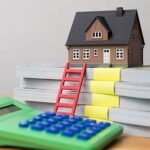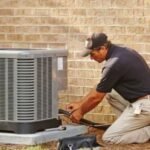The internet is essential for modern life, but managing your home network can feel confusing, especially when you run into a strange error code. If you’ve ever tried to access your router and saw a message for 192.1y8.1.1, please know you are not the first.
This tiny typing mistake stops lots of people from getting to their crucial network settings. Fixing this error is extremely easy and quickly gives you back full control over your Wi-Fi, security, and connection speed.
Understanding the difference between the mistyped 192.1y8.1.1 and the correct 192.168.1.1 is the first, best step toward becoming a true network manager.
This guide shows you exactly how to fix the error, access your router login page safely, and start using the powerful tools hidden inside your router’s settings.
What is 192.1y8.1.1, and Why This Typing Error Happens
Let’s be clear: 192.1y8.1.1 is not a real internet address. This mix of numbers and a letter is a simple, very common typing mistake that happens when people try to type the correct router IP address.
This error is almost always caused by two simple things:
- Keyboard Position: The letter ‘Y’ and the number ‘6’ sit right next to each other on a standard keyboard. Your finger likely just slipped and hit the wrong key.
- Typing Fast: When people are trying to get to a website quickly, they often miss a character, especially a number in the middle of a long string like an IP address.
This incorrect address is called an invalid IP address. Since it has a letter, the web browser cannot translate it into a network location. It completely breaks the rules of the IPv4 addressing system, so the browser immediately throws up an error page.
Understanding 192.168.1.1: The Correct Router IP Address
The address 192.168.1.1 is one of the most vital numbers for anyone managing a home network. This number is known as a private IP address and it strictly follows the Internet Protocol version 4 (IPv4) standard.
You should think of 192.168.1.1 as the master key to your home Wi-Fi network. Every router needs a specific, unique address so that devices like your computers, phones, and tablets can communicate with it locally. This specific number belongs to a special range called the Class C private network.
For most popular brands—I’m talking about D-Link, Netgear, and TP-Link—192.168.1.1 is the number they use straight out of the box. It acts as the local gateway that connects all your devices to the outside internet. Knowing this address gives you the power to secure and manage your whole home network.
192.1y8.1.1 vs 192.168.1.1: Key Differences Explained
The difference between the two addresses is just one single, yet crucial, character.
| Address | Protocol Status | Network Class | Why it Fails |
| 192.1y8.1.1 | Invalid IPv4 Format | None | Contains the letter Y; breaks the fundamental rule that IPv4 addresses must only contain numbers and dots. |
| 192.168.1.1 | Valid IPv4 Format | Class C Private | A standard, correct private address used to access your router within your home network. |
IPv4 addresses cannot contain letters. Period. Because 192.1y8.1.1 breaks this basic rule, the web browser immediately throws it out. The correct address, 192.168.1.1, is the valid numerical format that lets you reach the router login page.
Why 192.1y8.1.1 Shows an Error and How to Recognize It
When you type 192.1y8.1.1 into your web browser, the message you get will usually be something like “Page Not Found” or “Connection Timed Out.”
The browser is smart; it follows the rules of IPv4 addressing. When it sees the letter ‘y’, the browser instantly knows the address is invalid. It doesn’t waste any time trying to connect or search for a website. It fails immediately because the number format is fundamentally broken.
If you get any kind of connection error and notice a letter in your address, you can quickly recognize this as a simple typing mistake. Your fastest fix is always to retype the address very carefully, making sure you hit the number 6 instead of the letter y.
The Importance of Accessing Your Router Login Page
Accessing your router login page is so important because your router is the brain of your entire network. Most people leave it alone, but that is a huge missed opportunity and a potential security risk.
You need to access this page frequently to keep your network safe, fast, and running right. If you use only the factory settings, your network could be vulnerable or much slower than it should be. A quick check of your router settings, easily accessible via the correct address, helps you manage both performance and security.
For example, logging in lets you update your router’s firmware, which often contains critical security patches against new threats.
Tasks You Can Perform on Your Router Login Page
Once you successfully navigate to http://192.168.1.1 or https://192.168.1.1 and log in, you gain total control over several crucial network functions.
Configuring Network Settings and SSID
This is where you name your Wi-Fi network and choose the channel it uses.
- You can change the SSID (the name of your Wi-Fi network). Changing the default name is always a smart idea for security.
- You can set up a Guest Network. This is great for visitors because it lets them use the internet without giving them access to your private computers or hard drives.
Managing Security Settings and Passwords
Security is the single most important reason to visit the router page. You are setting the rules for who gets to use your network.
- Change the Default Password: You absolutely must change the router’s own login password. Default passwords are weak and easily found by hackers online!
- Update Encryption: Check that you are using the strongest security protocol available, which should be WPA2 or WPA3.
Monitoring Connected Devices and Bandwidth Usage
Is your internet running slowly? You can find out why right here.
- View Device List: You can see every single phone, computer, and smart appliance connected to your Wi-Fi. If you see a device you don’t recognize, you can block it.
- Set Quality of Service (QoS): This feature lets you prioritize traffic. You can give your work computer a higher bandwidth than the gaming console, preventing lag during important meetings.
Troubleshooting Network Issues and ISP Settings
When the internet slows down unexpectedly, the router page helps you figure out the problem.
- Check Connection Status: You can instantly see if your router is successfully talking to your Internet Service Provider (ISP).
- Change DNS Settings: If websites are loading slowly, changing the Domain Name System (DNS) server settings here can often speed up web browsing instantly. I do this regularly myself to test different network speeds.
Step-by-Step Fix for 192.1y8.1.1 Error
Fixing the 192.1y8.1.1 error is the simplest thing you can do all day!
- Look at the Address Bar: Check the address you typed into your web browser. You will see the incorrect 192.1y8.1.1.
- Find the Mistake: Notice the letter ‘y’ in the second part of the number.
- Correct the Error: Delete the ‘y’ and replace it with the number 6.
- Press Enter: The correct address is 192.168.1.1. Press enter to load the correct router login page.
If this address still doesn’t work, don’t worry. Some routers use different default addresses, like 192.168.0.1 or 10.0.0.1 (which is a Class A private IP). You can almost always find the right one printed on a sticker on the bottom of your router.
How to Safely Access Your Router Login Page
To make sure you are accessing the correct and secure page for your router, follow these safety steps.
- Use HTTP or HTTPS: Start the address with http:// or, even better, https:// for a secure connection. The browser will usually figure out the rest.
- Use the Default Credentials: If you have never logged in before, the router will ask for a username and password. The default is usually admin for the username and either admin or password for the password. These are terribly unsafe, so change them immediately after logging in.
- Do Not Share Credentials: Never give your router’s login details to anyone you don’t completely trust. This single password protects your entire home network.
Tips to Prevent IP Typing Mistakes in the Future
Preventing the 192.1y8.1.1 error is simple with these quick tips:
- Use Bookmarks: Save the correct address (192.168.1.1 login) as a bookmark in your web browser. This prevents any future typing errors.
- Write It Down: If you change your router’s default IP address (a feature you can change on the login page), write the new address down and stick the note right to the bottom of the router itself.
- Use Password Managers: Use a password manager tool. This can safely store both the address and your strong login password, making future access instant and totally error-free.
When to Contact Your Internet Service Provider for Help
Most of the time, the 192.1y8.1.1 error is fixed by retyping the address. However, you might need to call your ISP (like Comcast, AT&T, or Spectrum) for help in certain situations:
- Forgot Custom Password: If you changed the default password and forgot it, and the factory reset button fails, the ISP might be the only ones who can help you restore access.
- No Connection: If you are using the correct 192.168.1.1 address but still cannot connect to the router page, the router hardware itself might be broken.
- Locked Settings: If your ISP gave you a special modem/router combo, they may have locked certain advanced settings that only they can change.
Conclusion
The annoying message for 192.1y8.1.1 is just a simple typo that violates the IPv4 standard. The correct address, 192.168.1.1, is the key that lets you manage your network like a real professional.
By avoiding this common typing mistake and securely accessing your router login page, you gain full control over your Wi-Fi speed, security protocols, and device access.
Managing your network actively is the absolute best way to make sure you always have a fast, reliable, and safe internet connection.
Frequently Asked Questions (FAQs)
Why is my router IP 192.168.1.1?
192.168.1.1 is a globally recognized private IP address within the Class C range. Router manufacturers use it as a default gateway address so that any device can quickly locate and communicate with the router on a local network.
Is it safe to type 192.168.1.1 into my browser?
Yes, it is totally safe. 192.168.1.1 is a private address that only works within your home network. It does not expose your router settings to the public internet or any outside threats.
What should I do if the router login page is asking for a password I don’t know?
If you never changed the password, try the common default credentials like admin/admin or admin/password. If those fail, you must press and hold the small reset button on the back of the router to restore the original factory settings.
My router doesn’t use 192.168.1.1. Where can I find the correct address?
Check the sticker on the bottom or side of your physical router device. The default IP address, along with the initial username and password, is almost always printed there by the manufacturer.
What is the difference between http://192.168.1.1 and https://192.168.1.1?
HTTPS provides an encrypted, secure connection between your browser and the router login page. This is safer because it prevents local eavesdroppers from seeing your username and password, though HTTP is still commonly used since the connection is entirely local.















